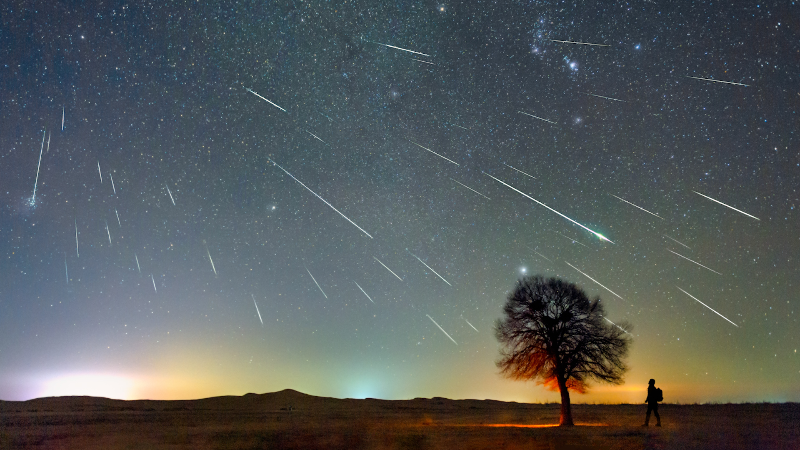Top views in May skies? How about Eta Aquarid meteor shower, flower moon
- The Eta Aquarid meteor shower is expected to peak May 5-6.
- May's full moon will arrive May 12. It will be a micromoon.
- Kosmos 482, a Soviet spacecraft, is expected to fall back to Earth between May 8-11.
There's a few things to enjoy when you head outside and gaze up in May.
There's another meteor shower and there's the full moon, which in May will be a micromoon.
The annual Eta Aquarid meteor shower overlaps April's Lyrid meteor shower, which peaked April 21-22.
Eta Aquarid meteor shower
The Eta Aquarids peak during early May each year. In 2025, the Eta Aquarids meteor shower will be active from April 20 to May 21, with the peak expected May 5-6, according to NASA.
About 10 meteors are visible per hour in the Northern Hemisphere.
"Eta Aquarid meteors are known for their speed, with the meteors traveling at about 40.7 miles per second into Earth's atmosphere," NASA said. The best time to see them is during the hours right before dawn facing east.
The Eta Aquarids meteors originated from Halley's comet, known officially as comet 1P/Halley, according to NASA. The last time comet Halley was seen by casual observers was in 1986. It will re-enter the inner solar system again in 2061.

Earthshine visible April 30-May 1. What is earthshine?
Earthshine is a "dull glow which lights up the unlit part of the moon because the sun’s light reflects off the Earth's surface and back onto the moon," according to timeanddate.
Earthshine is best seen a few days before and after a new moon, right after sunset or before sunrise. Best night to see it will be May 27.
When is the May full moon, known as the flower moon?
Known as the flower moon, May's full moon will reach peak illumination at 12:56 p.m. ET on Monday, May 12, according to the Old Farmer's Almanac.
May's full moon will be a micromoon, which is when the moon is at its farthest point in its orbit around the Earth.
It won’t look any smaller. In fact, it may seem bigger because of an optical illusion known as the moon illusion, which is an optical illusion when the moon looks larger when it is near the horizon, according to timeanddate.
May's full moon is known as the flower moon, which " should be no surprise; flowers spring forth across North America in abundance this month," according to the Old Farmer's Almanac.
Moon phases in May 2025
Moon phases in May:
- First quarter: May 4
- Full moon: May 12
- Third quarter: May 20
- New Moon: May 27
Planetary alignment: Moon, Venus, Saturn line up
From May 22-24, look east about 30 minutes before sunrise to see the waning crescent moon near Venus and Saturn, according to EarthSky.
Soviet spacecraft expected to fall back to Earth in early May
A Soviet spacecraft, Kosmos 482, was launched on March 31, 1972, It was intended to go to Venus but a problem left it unable to leave Earth's orbit, according to EarthSky. It's also spelled Cosmos 482.
"It’s been circling Earth for 53 years and (its landing module) will reenter the atmosphere around May 8 to 11, 2025."
It will be "an unusual uncontrolled reentry," according to Space.com. The landing module was intended for Venus and was made to withstand reentry through the thick Venus atmosphere, so it's possible it might "survive reentry through Earth's atmosphere intact."
Exactly where and when the spacecraft will come down have not yet been determined, "although the odds that it occurs over land or a populated area are small," EarthSky said.
Marco Langbroek, who has been tracking the spacecraft, said it reentry could be between the 52N and 52S latitudes, which would put it as far north as the United Kingdom or as far south as New Zealand. It will also achieve a velocity of around 150 miles per hour in the moments before impact, according to PopularScience.
The landing module weighs 1,091 pounds and is about 3.2 feet across.
➤ Kosmos 482 descent craft reentry forecasts